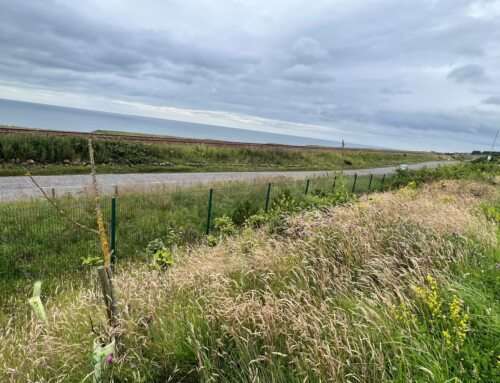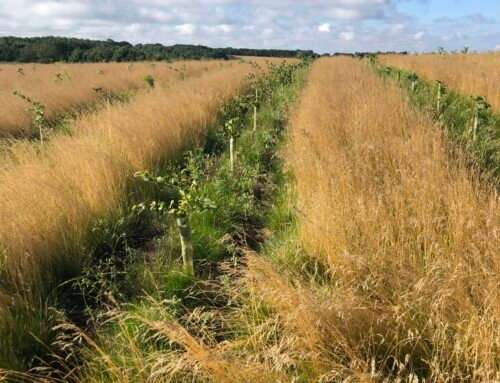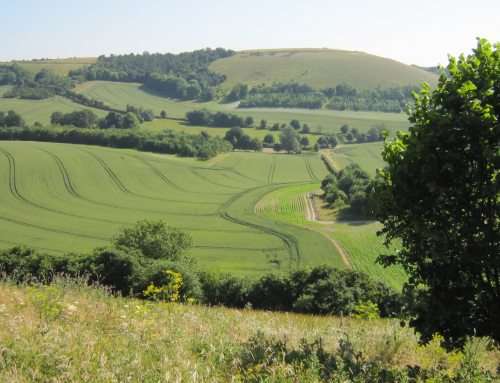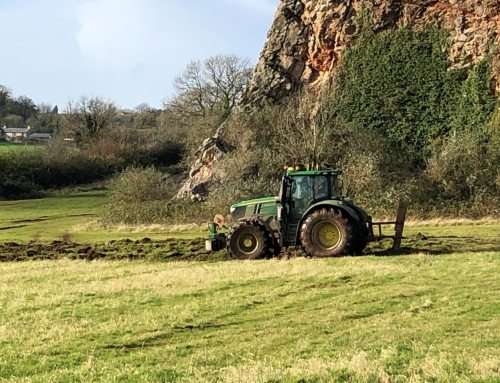St. Peter’s Wood
Site: Land at Hartshorne, Swadlincote
Client: Mountpark Developments Ltd
Departments Involved: Ecology, Forestry, Arboriculture and Soils
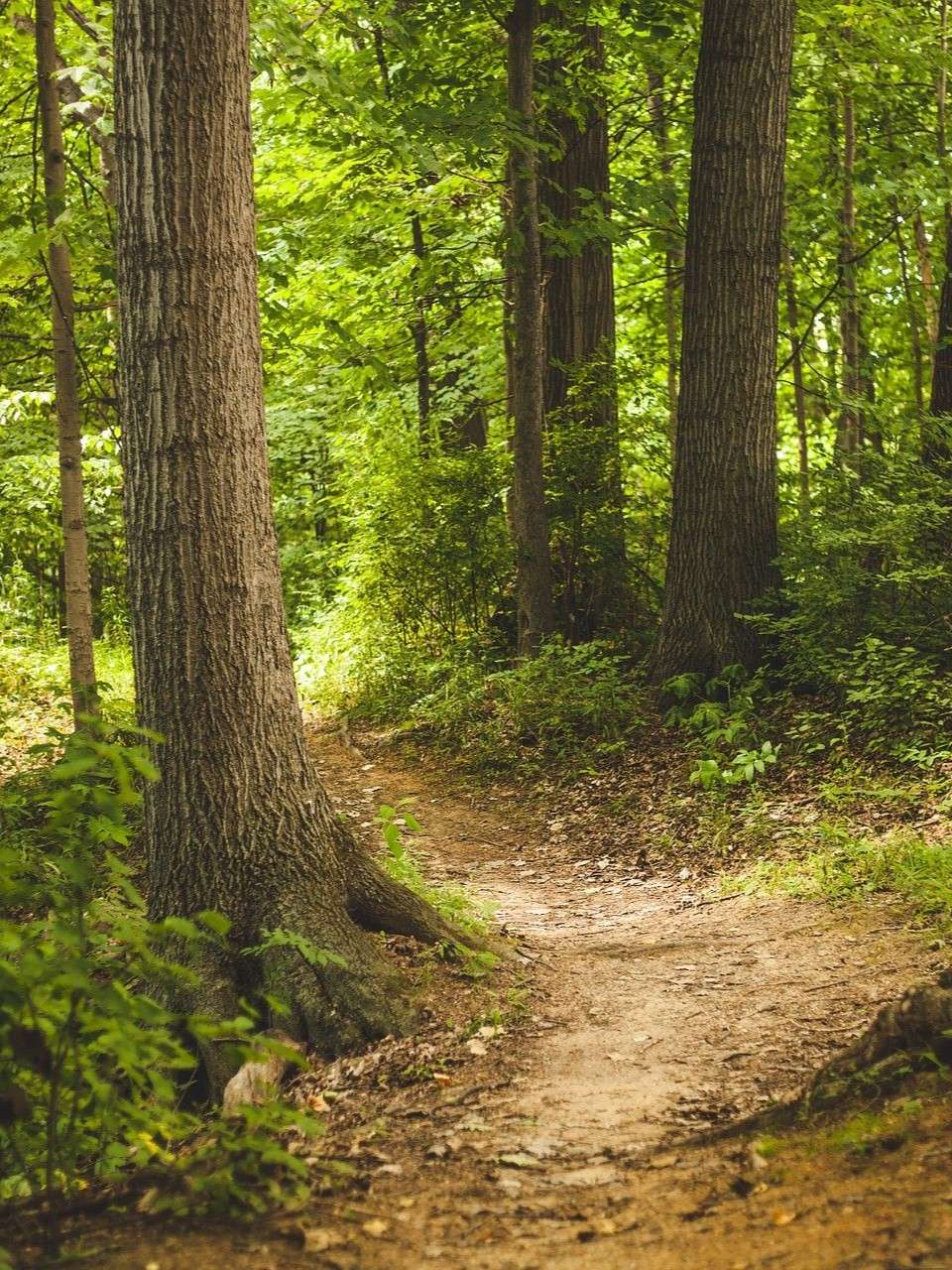
Overview
Nicholsons provided ecological, forestry and soil support to the creation of a new multifunctional woodland in Hartshorne, Swadlincote. Our teams transformed arable farmland into a public access woodland that captures carbon, enhances biodiversity and supports visitor wellbeing.
The objectives involved acquiring the 53-acre land and creating a public access woodland. The main initiatives were to provide carbon capture services, enhance biodiversity and provide respite for visitors. A cross-divisional strategy sought consultation with a variety of stakeholders for optimal environmental alignment. Mountpark aimed to plant 27,500 trees and shrubs, contingent on soil assessment and biodiversity metrics.
Our ecology, forestry and soils team played a pivotal role in conducting thorough assessments, calculations and collaborating with stakeholders for grant funding and Woodland Carbon Code registration. The woodland, designed for versatility and sustainability, demonstrated successful establishment and carbon sequestration, fostering community engagement and future projects.
Highlights
- Implementation of the biodiversity net gain metric to show a projected increase in biodiversity.
- Planting of broad-leaved, native species within the proposed woodland.
- The inclusion of wet woodland and wetland scrapes.
- The introduction of diverse, native seed mixes and grassland habitats.
- Registration of the woodland onto the Woodland Carbon Code.
- Further planned events with Nicholsons and the National Forest.
Context
A hybrid development plan was sought for a parcel of land located off Stanton Lane in Ellistown, Coalville, Leicestershire. The site consisted of two areas of land totalling 35.48 hectares which was split into 32.6 hectares for the main site and 2.88 hectares for the proposed farm site. Before planning, the site comprised areas of low-value grassland, hedgerows, parcels of woodland, scattered trees, standing water and buildings.
Objectives for the main site involved outlining permission for the erection of specific buildings for employment purposes, with a maximum floor area of 89,000 square metres to the north and the remainder of the site proposed as a community woodland area. As a result, the proposal included an additional access route which would incorporate parking, landscaping, drainage, highways and other associated infrastructure.
The plans for the proposal sought to repurpose the existing structures on the site and divert the public footpath known as Grange Walk.
The proposed farmstead aimed to comprise two new two-storey dwellings for farm managers with associated farm buildings including cattle sheds, bullpens, calf pens, a grain store and a steel-framed workshop. In terms of enhancement, the scheme sought to create additional planting and the inclusion of a balancing pond towards the southeast corner incorporating the existing public right of way.
Challenges
The initial surveys completed by our ecology and arboriculture teams highlighted the need for further investigations and mitigation measures to aid the acceptance of the proposal. Part of the design process required the removal of several ponds within the site, except for the pond designated as a Local Wildlife Site, the nature of the designation and suitable habitat for great crested newts (GCN) meant further surveys were required following our ecology team’s initial assessment.
The proposed development sought to repurpose existing buildings, though a known population of brown long-eared bats was present, with swallows and house sparrows found inhabiting the surrounding buildings.
Our arboriculture team initially identified areas of trees that required further protection, in addition to the existing protection order situated along the north-western boundary; this meant further mitigation measures were required. Additionally, a soil management plan was requisite for planning permission, coupled with the implementation of a National Forest planting scheme, given the site’s location within the National and Charnwood Forest.
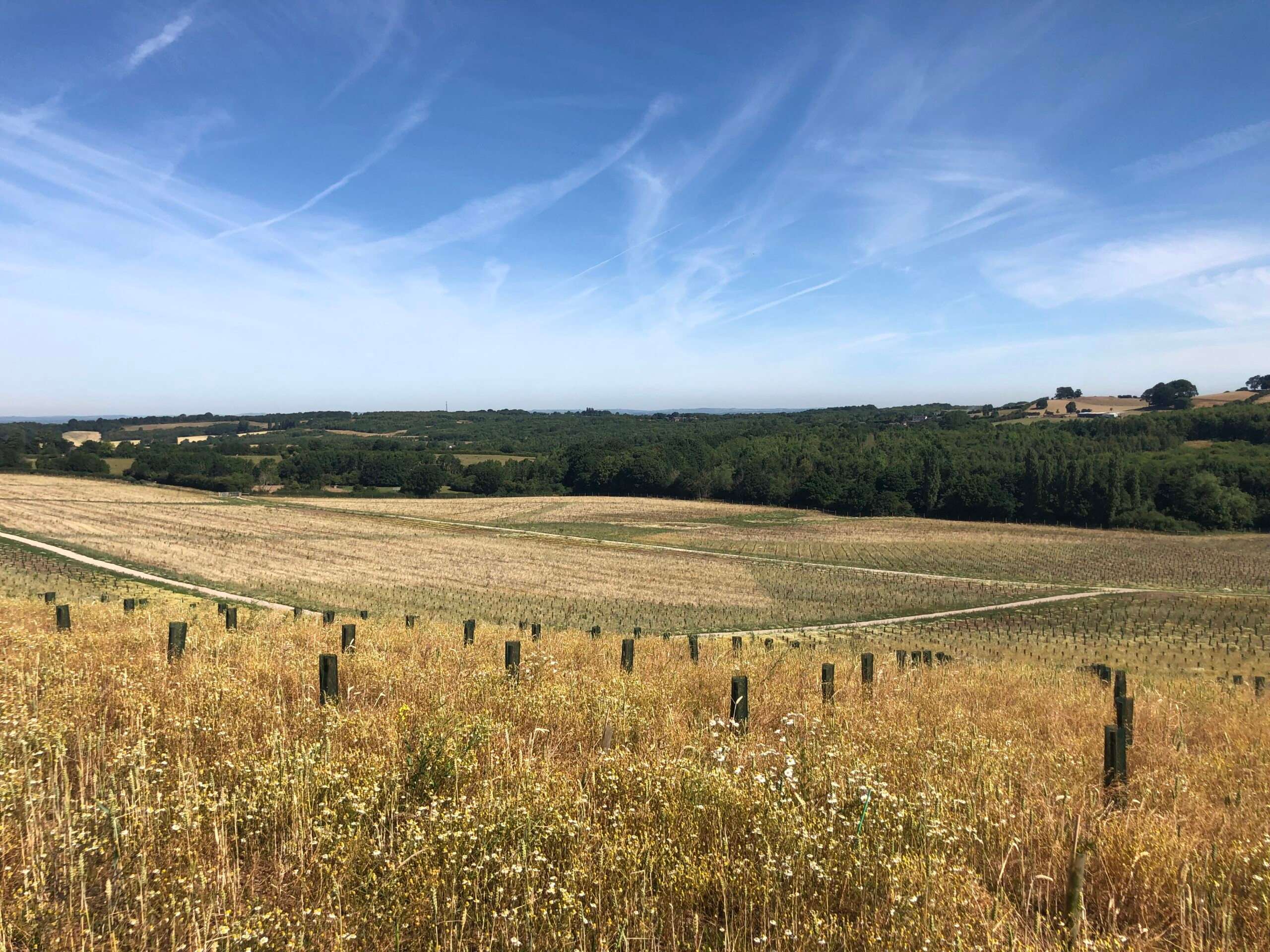
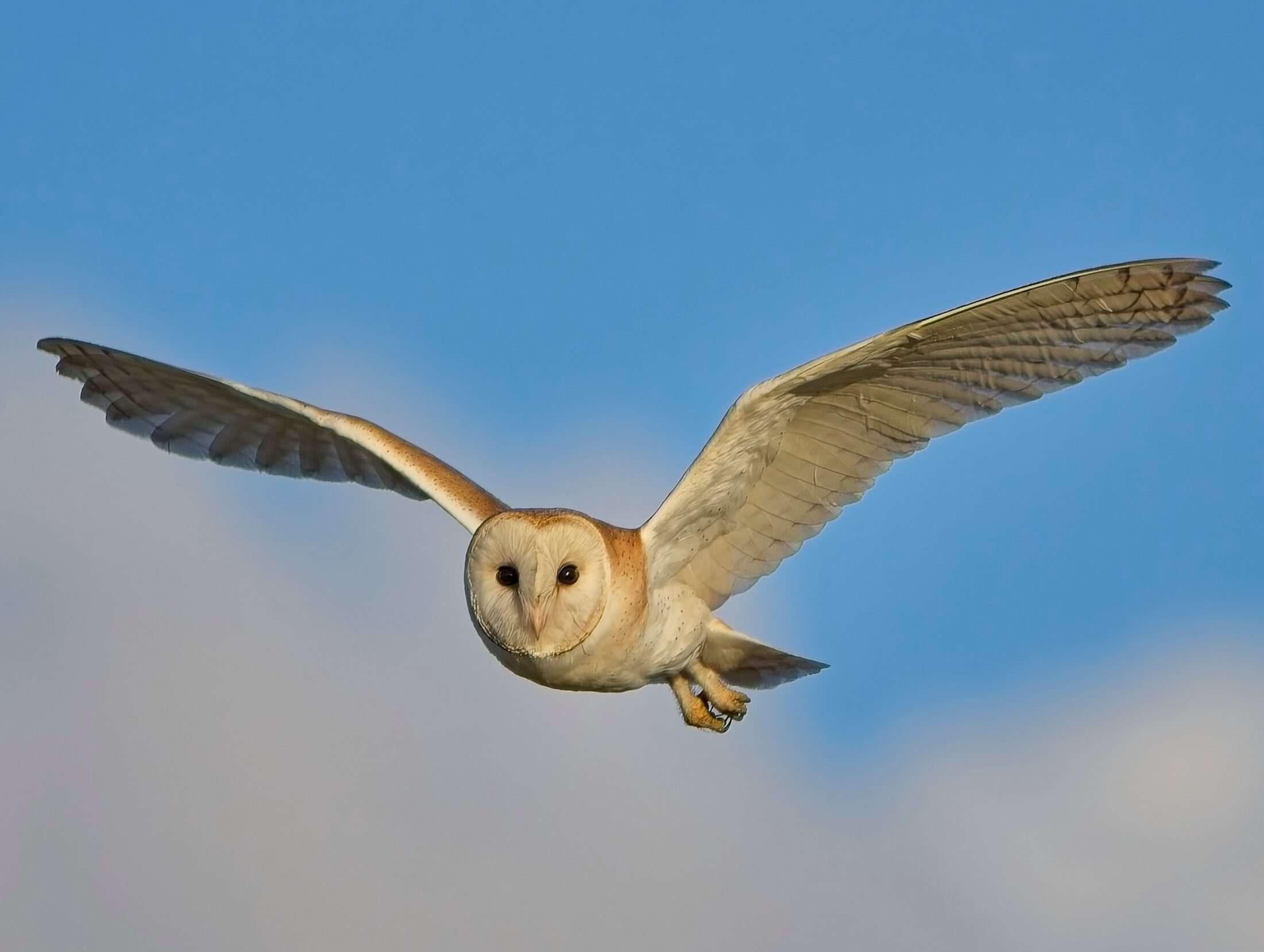
Nicholsons Involvement
Nicholsons ecology, arboriculture, forestry and soils team played a crucial role in supporting the collaborative process with stakeholders to fulfil the objectives outlined in the proposal. Our ecologists conducted a thorough assessment to identify present habitat types, with additional assessments and calculations undertaken for biodiversity net gain.
The biodiversity assessment from our ecology team allowed us to calculate a 97.29% net gain in habitat units and a 19.52% net gain in hedgerow units post-development. Simultaneously, our soils team analysed laboratory data to precisely determine the existing state of the surrounding area before the planting design phase.
Following this, our forestry team, in collaboration with our ecology team, marked designated planting areas and compiled a species list to include a variety of woodland types and structures. Nicholsons effectively worked with stakeholders to secure grant funding and actively supported Mountpark in registering the proposed woodland onto the Woodland Carbon Code. Through these integrated efforts, Nicholsons ensured a comprehensive approach to achieving the project’s goals efficiently and collaboratively.
Outcomes
Nicholsons collaborated closely with Mountpark to design a versatile woodland incorporating diverse types and structures, including parkland areas and allowing natural colonisation in some sections. The design featured a comprehensive network of rides, strategically highlighting key viewpoints. Throughout the site, shrub and minor tree species were planted along rides. The project commenced in spring 2022 with meticulous planning, fencing, specified planting and seeding completed under the supervision of the Nicholsons team.
The establishment phase proved successful, demonstrating excellent survival rates despite the challenging weather conditions. Nicholsons support enabled the woodland’s registration on the Woodland Carbon Code, with an estimated carbon sequestration of approximately 4,850 tonnes over a 100-year growing period. Ongoing monitoring will assess the site’s performance and carbon capture potential through soil improvements, informing future projects.
Mountpark ensures community engagement through events and interpretation signage, fostering a sense of ownership. Collaborative efforts with Nicholsons and the National Forest include planned events and onsite workshops with local schools, contributing to sustainable development and community involvement in the evolving woodland.
This Nicholsons team have been exceptional through our journey into woodland creation, from their site assessment, scheme design, liaison with all stakeholders and the National Forest and effective implementation and management. As a company we are immensely proud of what we have achieved.

